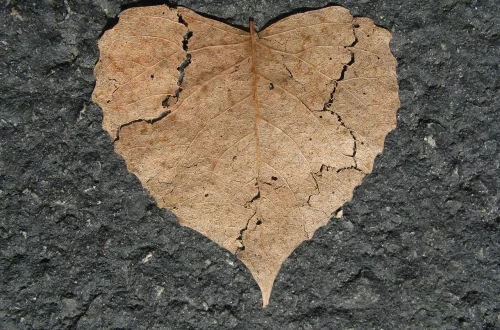
Exploring Artistic Expressions of the Female Form in Photography
The female form has long been a subject of fascination and inspiration in the realm of art, particularly in photography. This captivating subject transcends mere aesthetics; it embodies a complex interplay of culture, identity, and personal expression. From the intimate portrayal of women in classical art to the bold and innovative representations found in contemporary photography, the female figure serves as a canvas upon which various narratives and emotions can be explored.
In photography, the female form is not just captured; it is interpreted, celebrated, and sometimes even critiqued. The lens becomes a tool for both empowerment and vulnerability, offering a unique perspective on femininity that reflects societal norms, personal experiences, and artistic intent. The evolution of photographic techniques, alongside shifting cultural attitudes, continues to enrich the dialogue surrounding women’s representation in visual media.
As we delve deeper into this subject, it is essential to recognize that photography’s portrayal of the female form is not monolithic. It varies widely across different cultures, eras, and individual artists. This diversity enables a broader exploration of the themes of beauty, strength, and identity, while also challenging traditional notions and stereotypes. The interplay of light, shadow, pose, and context in photography allows for an intricate examination of the female experience, inviting viewers to engage with the image beyond its surface.
Celebrating Diversity in Representation
One of the most significant aspects of contemporary photography is its focus on celebrating diversity in the representation of the female form. Gone are the days when a singular standard of beauty prevailed, often dictated by narrow societal norms. Today, photographers are increasingly embracing a wide range of body types, ethnicities, and age groups, offering a more inclusive and realistic portrayal of women.
This shift towards diversity not only enriches the artistic landscape but also resonates deeply with audiences. It fosters a sense of belonging and validation for individuals who have often felt marginalized in traditional media narratives. Photographers are now using their craft to challenge stereotypes and promote body positivity, showcasing women in all their forms—curvy, slender, young, mature, with varying skin tones, and unique features.
Moreover, this celebration of diversity extends beyond just physical attributes. It encompasses the essence of femininity itself, allowing for a broader exploration of identity, culture, and personal stories. Photographers often collaborate with their subjects to create images that reflect their experiences, struggles, and triumphs. This collaborative approach not only enriches the narrative but also empowers women by giving them agency over how they are portrayed.
In many cases, photographers are utilizing their platforms to address social issues surrounding women’s rights, body image, and self-acceptance. Through powerful imagery, they raise awareness and provoke thought, encouraging viewers to reconsider their own perceptions of beauty and femininity. The result is a vibrant tapestry of images that celebrate the complexities and nuances of womanhood, inviting viewers to see beyond conventional beauty standards.
Ultimately, the celebration of diversity in the representation of the female form in photography is not just a trend; it is a movement towards inclusivity and authenticity. As artists continue to push boundaries and challenge norms, they pave the way for a richer understanding of what it means to be a woman in today’s society.
The Role of Light and Shadow
Light and shadow play a pivotal role in photography, especially when capturing the female form. The manipulation of these elements can dramatically alter the mood, tone, and overall impact of an image. Photographers often use light to highlight the contours and textures of the body, creating a sense of depth and dimension that draws the viewer’s eye.
Soft, diffused light tends to produce a gentle, ethereal quality that can evoke feelings of tenderness and intimacy. This type of lighting is often employed in portraiture to accentuate the subject’s features without harsh distractions. It allows for a more nuanced representation of the female form, where imperfections are embraced, and the natural beauty of the subject is celebrated.
Conversely, stark lighting can create bold contrasts, emphasizing strength and character. This approach can evoke a sense of empowerment, portraying women as formidable figures. By casting shadows that sculpt the body, photographers can create dynamic compositions that suggest movement and energy. The interplay of light and shadow not only enhances the visual appeal of an image but also conveys deeper narratives that resonate with the viewer.
Moreover, the use of light can symbolize various themes associated with femininity. For instance, soft lighting might represent vulnerability and grace, while harsh lighting could signify resilience and strength. Photographers often use these symbolic elements to convey complex emotions and stories, inviting viewers to engage with the image on a deeper level.
The strategic use of light and shadow also allows for experimentation with various styles and techniques. From chiaroscuro to silhouette photography, artists can explore a range of visual effects that enhance their creative expression. This versatility enables photographers to develop their unique voice, contributing to the rich tapestry of artistic representations of the female form.
As technology advances, new lighting techniques and equipment continue to expand the possibilities for photographers. With the rise of digital photography, artists can experiment with editing tools to further manipulate light and shadow, enhancing their creative vision. In this ever-evolving landscape, the role of light and shadow remains a fundamental element that shapes the narrative and aesthetic of photography.
Empowerment Through Artistic Expression
Artistic expression serves as a powerful tool for empowerment, particularly for women. Photography, as a medium, provides an avenue for self-exploration, creativity, and storytelling. Through the lens, women can reclaim their narratives and assert their identities in ways that challenge societal expectations and norms.
Many female photographers are using their craft to explore themes of femininity, sexuality, and self-acceptance. By capturing their own experiences or the experiences of others, they create a platform for dialogue and reflection. These images often serve as a means of processing personal struggles, celebrating achievements, and advocating for social change.
For many women, participating in photography can be a transformative experience. It allows them to confront insecurities, embrace their bodies, and express their individuality. The act of being photographed can be empowering in itself, as it encourages subjects to take control of their image and narrative. This empowerment extends beyond the individual, as powerful images resonate with broader audiences, inspiring others to embrace their authenticity.
Moreover, photography can serve as a form of activism. Female photographers often use their work to highlight issues such as body positivity, gender equality, and representation. By sharing these images on various platforms, they reach a wider audience and spark conversations about important societal topics. This intersection of art and activism fosters a sense of community and solidarity among women, encouraging them to support one another in their journeys.
The impact of empowerment through artistic expression extends into the realm of mental health as well. Engaging in creative pursuits can be therapeutic, allowing individuals to process emotions and experiences in a constructive manner. Photography can provide an outlet for self-reflection, healing, and growth, fostering a greater sense of self-worth and confidence.
In this way, the female form in photography becomes more than just a subject; it transforms into a symbol of empowerment and resilience. As women continue to embrace their stories and express themselves creatively, the landscape of photography will undoubtedly evolve, reflecting the rich tapestry of experiences that define womanhood.
In conclusion, the artistic expressions of the female form in photography offer a profound exploration of beauty, identity, and empowerment. Through diverse representations, the use of light and shadow, and the celebration of artistic expression, photographers are reshaping the narratives surrounding femininity. As this dialogue continues to evolve, it invites viewers to engage with the complexity of women’s experiences and the beauty of their stories.
**Disclaimer**: This article is for informational purposes only and does not constitute medical advice. Always consult a healthcare professional for medical concerns.




